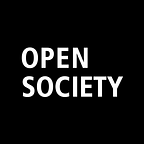Here’s the Full Story about COVID-19 in South Korea
By Hyuna Moon, a senior researcher at the Center for Transnational Migration and Social Inclusion
On February 19, 2020, government officials in Daegu, South Korea recorded the country’s first death from COVID-19. Reports showed that the person suffered from pulmonary emphysema and did not receive the proper medical treatment. The individual was left in an open-air room in a mental health facility alongside more than one hundred other patients-all of whom later tested positive for COVID-19.
After the facility’s outbreak, Daegu became the epicenter of the grief-stricken story of South Korea’s COVID-19 crisis. From February to April, most of the COVID-19 cases were heavily concentrated in Daegu, notably in grouped patterns, among church people, nursing homes, and elderly care hospitals. There were hundreds of positive cases from the Shincheonji Church of Jesus religious sect, 133 cases from Miju hospital, and 57 cases from Hansarang Care Hospital.
After April, Daegu hit zero recorded positive cases of COVID-19 and South Korea saw no steep increases in the number of positive cases in other areas. The South Korean government claimed victory and started to promote their so-called “K-quarantine” model of recovery from the virus. As South Korea attempted to export its model to other countries, in an attempt to elevate its global leadership in shaping a new international order, the K-quarantine model focused heavily on government investment in biomedicine and technology. In response to this, South Africa, Colombia, and Kazakhstan are currently in talks with the South Korean government to import the system.
However, the real success of K-quarantine would not have been possible without the people-especially care and health workers-who bore hard or extremely tired working conditions. Without placing value and cost on the emotional and physical labor of these workers in their models, the South Korean government is failing to share with other countries the full story of how to beat the virus.
To make K-quarantine available to new markets, the government promised to invest ₩1.2 trillion until 2025 to invest in the research and development of medical devices (for example: fast testing-kit and vaccines by setting up the so-called K-bio fund and seek International Organization for Standardization standard certification on the entire method to promote K-quarantine efficiently). By comparison, the government promised emergency relief funds of around ₩1.39 trillion for 930,000 workers in special employment sector. These workers were the ones who bore the hardest work of the pandemic crisis, but mainly are composed of traditionally male exclusive occupations.
It is better than nothing, but upon a closer look, the K-quarantine biotech workers who benefit from this investment are primarily men. Meanwhile, the Korean government offered no relief plan for workers who do not have employment insurance, the Korean job security system that provides unemployment benefits. They comprise 6.8 million people, and more than half are women, and definitely most care workers belong to this group.
Care workers and medical personnel made tremendous sacrifices to take care of elders and patients hit hardest by COVID-19. These women care workers are the real impetus in stabilizing the ground zero. The real success story of K-quarantine is not technology and money planned and put forth by the government, but dedication and sacrifice of health and care workers who are in precarious position.
The lesson still to be learned even in South Korea is how a society really takes care of its people, especially care workers in the frontline. The more South Korea takes deep consideration for care workers in its public health policies, the more likely the K-quarantine will become sustainable in the future and worthy to be shared with other countries.
The Center for Transnational Migration and Social Inclusion is a grantee of the Open Society Foundations.
This post was originally published at opensocietyfoundations.org. For more Open Society voices, subscribe to our email updates.
